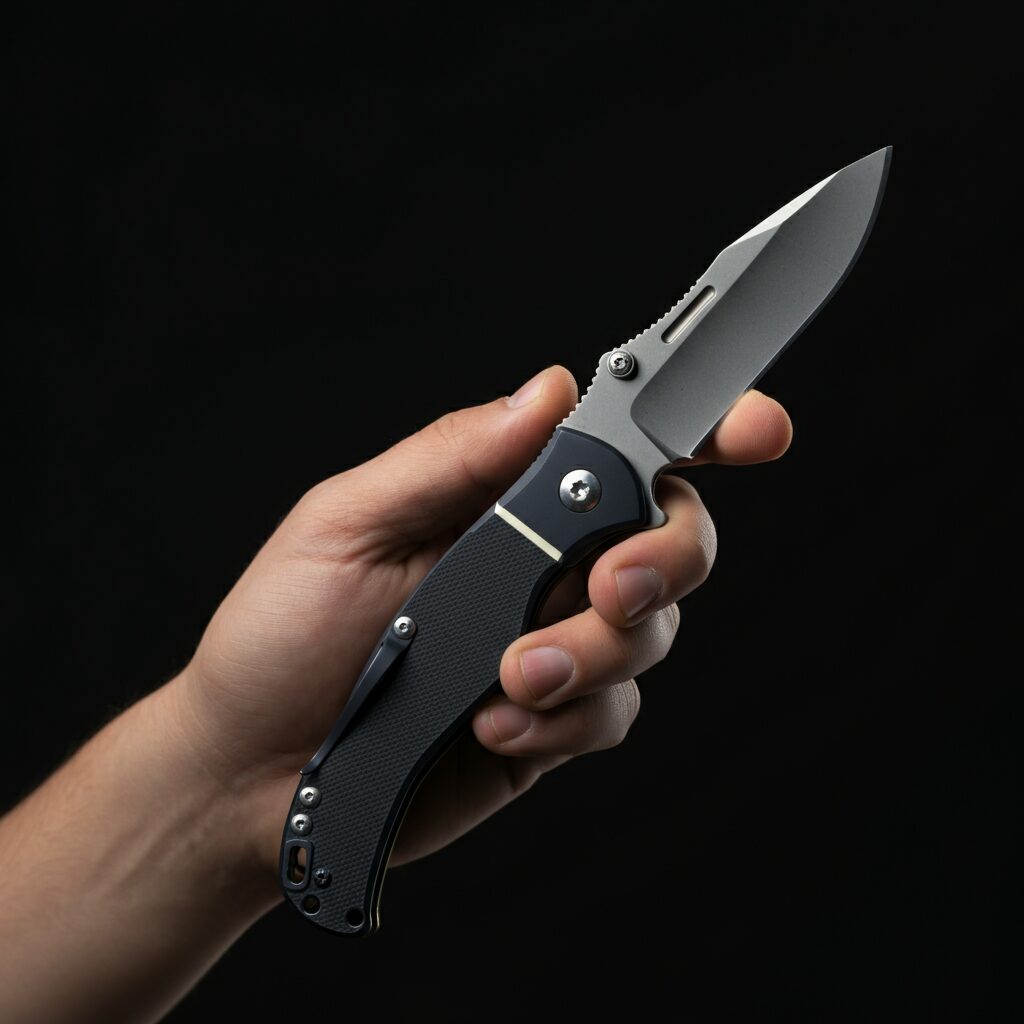Disclaimer: Although we base all of our reviews on both our product testing and that of other customer reviews. That being said, this website contains affiliate links for products we talk about. You don’t pay any more for any products you purchase by clicking on links but we might receive a small commission for our recommendation to those products we link to.
A dull pocket knife is more than just frustrating—it’s dangerous. When your blade struggles to cut through materials, you’re more likely to apply excessive force, increasing the risk of slips and injuries. But what happens when you need a sharp edge and don’t have a dedicated sharpener nearby?
The good news is that your home contains several items that can restore your pocket knife’s cutting power. With the right technique and a few common household materials, you can achieve surprisingly sharp results. This guide will walk you through three effective methods using items you likely already own.
Materials You’ll Need
Before diving into the sharpening process, gather these everyday household items:
Ceramic mug or bowl – The unglazed bottom ring of most ceramic mugs works as an excellent sharpening surface. Look for a mug with a rough, unfinished base.
Leather belt – A genuine leather belt serves as a perfect stropping tool. Avoid synthetic materials, as they won’t produce the same results.
Newspaper – Plain newsprint provides a gentle finishing surface for polishing your blade to razor sharpness.
These items might seem unconventional, but they’ve been used for centuries to maintain sharp edges. Professional barbers still use leather strops, and ceramic materials have long been valued for their abrasive properties.
Step-by-Step Sharpening Guide
Method 1: Ceramic Mug Sharpening
Turn your ceramic mug upside down and locate the unglazed ring on the bottom. This rough surface acts as a natural sharpening stone.
Hold the knife at a 20-degree angle against the ceramic ring. Draw the blade across the surface in smooth, consistent strokes, maintaining the same angle throughout. Start with the heel of the blade and pull toward the tip in one fluid motion.
Complete 10-15 strokes on one side, then flip the knife and repeat on the other side. The ceramic will gradually reshape the blade’s edge, removing dull spots and creating a sharper profile.
Method 2: Leather Belt Stropping
Secure one end of your leather belt to a stable surface, or hold it taut with your non-dominant hand. The smooth side of the leather should face up.
Place the knife flat against the leather with the edge facing away from the direction you’ll pull. Draw the blade across the leather in long, smooth strokes, maintaining light pressure. Unlike the ceramic method, you’ll pull the blade with the edge trailing behind.
Perform 15-20 strokes on each side. This stropping action polishes the edge and removes any microscopic burrs left from the ceramic sharpening stage.
Method 3: Newspaper Finishing
Lay several sheets of newspaper flat on a hard surface. Using the same trailing-edge technique as with the leather belt, draw your knife across the newspaper.
The newspaper provides an ultra-fine finishing touch, polishing the blade to its sharpest possible state. Five to ten light strokes per side should suffice.
Essential Safety Tips
Sharpening knives requires your full attention and respect for the blade. Always cut away from your body and keep your fingers clear of the blade path.
Maintain a consistent angle throughout the sharpening process. Changing angles mid-stroke can damage the blade’s geometry and reduce effectiveness.
Work slowly and deliberately. Rushing the process often leads to poor results and potential injury. Take breaks if your hand becomes tired or your concentration wavers.
Test your blade’s sharpness carefully. A properly sharpened knife should slice through paper cleanly without tearing or requiring excessive pressure.
Keep Your Blade Sharp for Life
These household sharpening methods offer a practical solution when professional tools aren’t available. The ceramic mug technique handles the heavy work of reshaping a dull edge, while leather stropping and newspaper finishing provide the polish needed for optimal performance.
Regular maintenance prevents your pocket knife from becoming extremely dull in the first place. A quick stropping session after each use will maintain your blade’s sharpness far longer than waiting until cutting becomes difficult.
Remember that these techniques work best on moderately dull blades. Severely damaged or chipped knives may require professional attention or dedicated sharpening equipment. However, for routine maintenance and touch-ups, your kitchen and closet contain everything needed to keep your pocket knife sharp and ready for any task.


0 responses to “How to Sharpen a Pocket Knife at Home – Even If You’ve Never Done It Before”